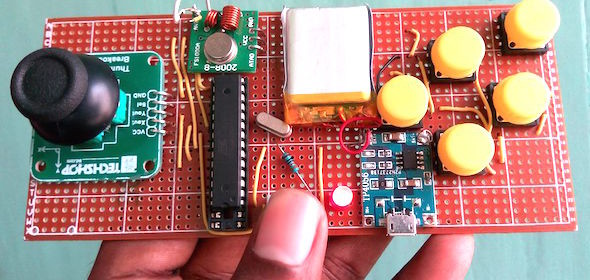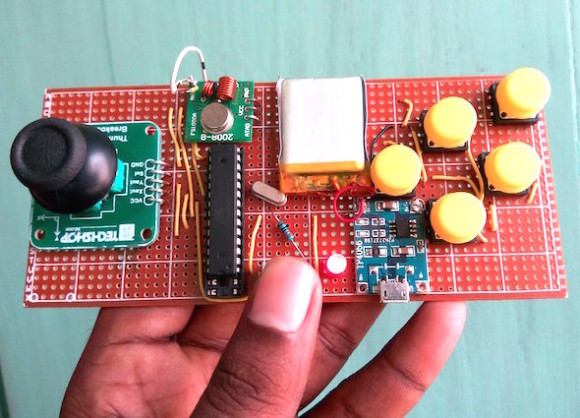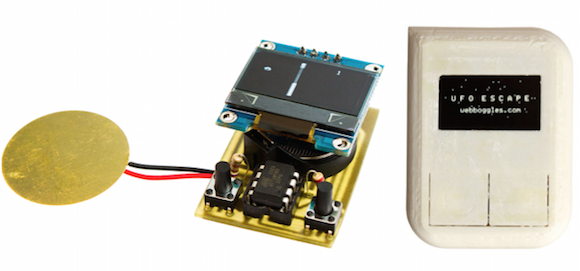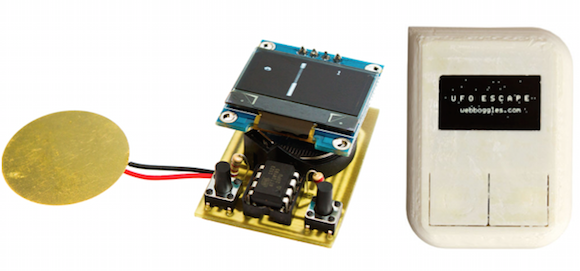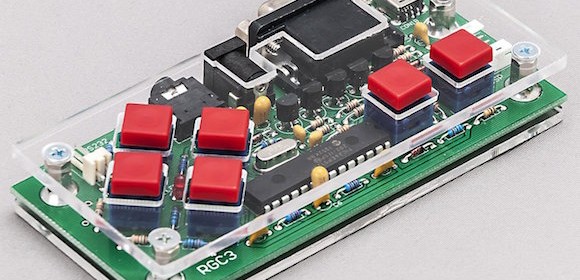Voja antonic‘s single chip game console is based on PIC24EP512GP202 microcontroller, a 16-bit Microchip’s MCU which is programmed to generate the VGA signal, music and sound effects for playing Jumping Jack.
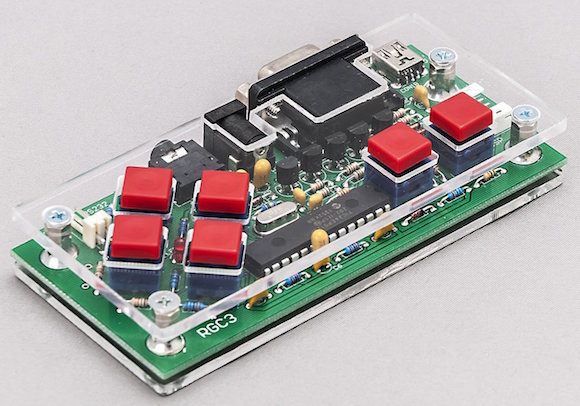
Single chip game console
As the video signal and the corresponding sync signals are generated by software, the console contains a minimum of hardware. There is also an audio signal output with five binary tone channels, mixed by a passive resistor network. Two of those channels are used for sound effects, similar to ones used in video games of that time (early eighties) and three for background music. This output is capable of driving line output for PC speakers or headphones.
It should be noted that there is no video processing unit, PGA or any special purpose chips, and that PIC microcontrollers are not designed for video signal generation. Everything is achieved by a series of different design tricks and some compromises. As te game does not run on PC but on stand-alone unit, screenshots are taken by camera from VGA monitor or directly from Photoshop, which was used in bitmaps creation process.
Video and audio generators, which are the vital parts of the firmware, are the parts of the operating system, which will soon be documented, and can be used for any other game or application. As the timings are critical, those parts are written in assembly language, but all the other parts of the program (scenario for some other games or any other application) may also be written in some other programming language, preferably Microchip’s C. In this case all parts are written in Assembler, but only as a result of author’s preference.
